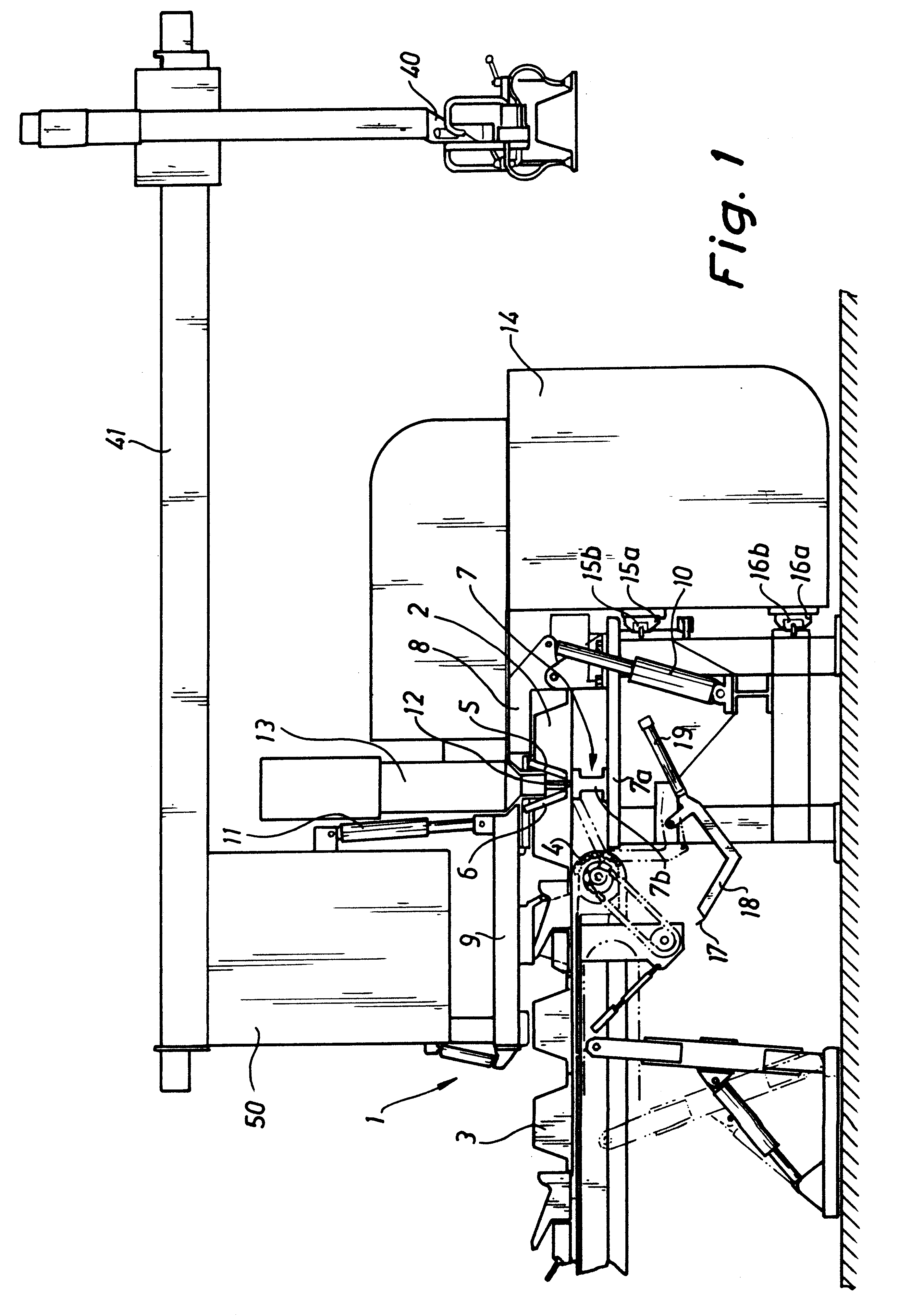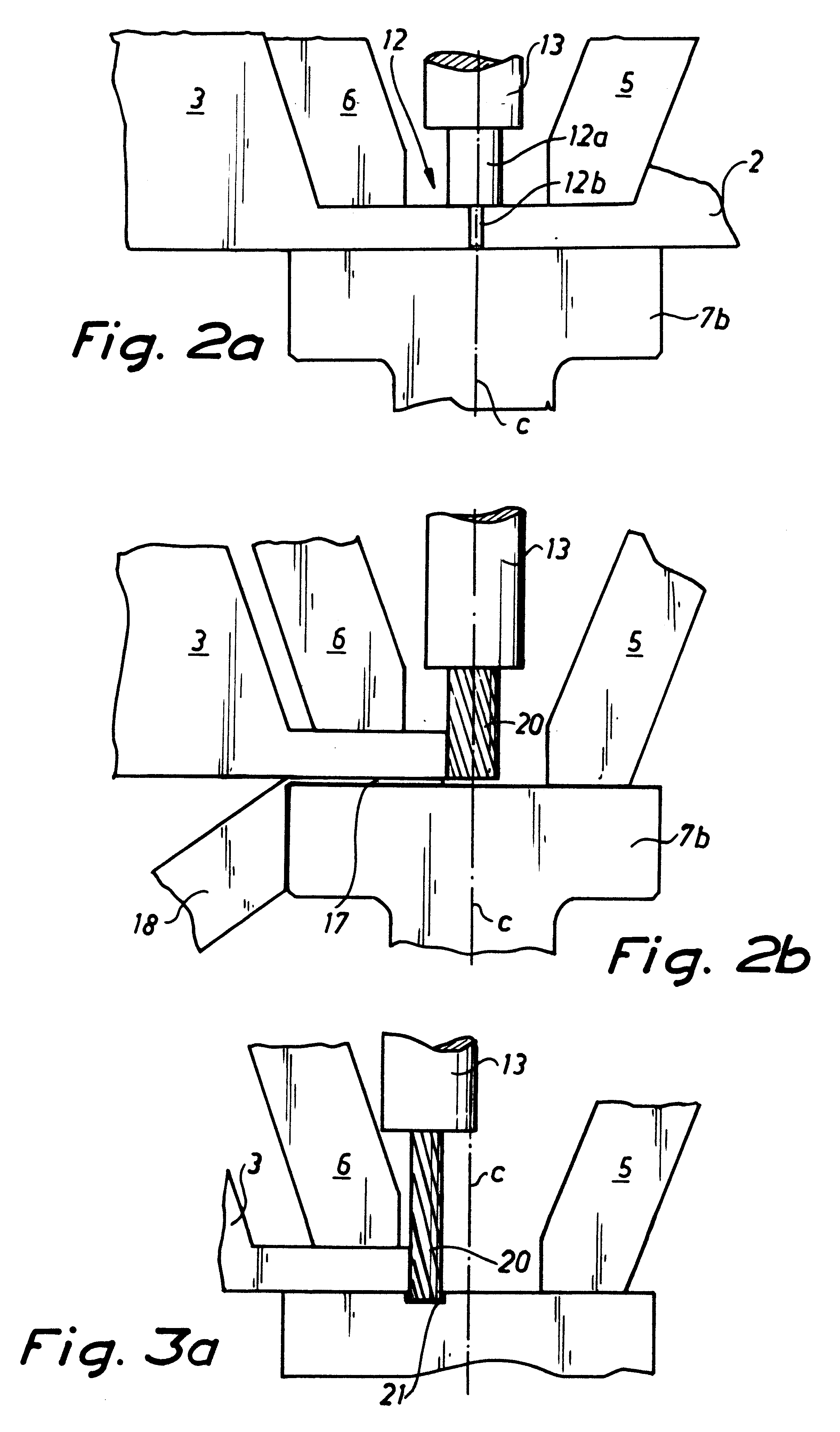Plant for friction stir welding
a technology of stir welding and plant, which is applied in the direction of soldering apparatus, manufacturing tools, auxillary welding devices, etc., can solve the problems of limited use, joint production having internal cavities, and welding technique not being used to join together workpieces
- Summary
- Abstract
- Description
- Claims
- Application Information
AI Technical Summary
Benefits of technology
Problems solved by technology
Method used
Image
Examples
Embodiment Construction
The plant 1 illustrated in FIG. 1 is adapted to be used to weld together extruded aluminium profile sections 2 in order to form an aluminium panel 3. The expression aluminium is used herein to designate either pure aluminium or an alloy of aluminium and another metal, such as mangnesium. The number of aluminium profile sections to be welded together is determined by the width of the profile section in question, which could for example have a width of 300 mm and a length of 12 m, and by the requested width of the finished panel. The manufacture is effected by welding a fresh aluminium profile section to the right-hand marginal edge of the immediately preceding profile section, as illustrated in FIG. 1, this immediately preceding profile section in turn having previously been welded to the right-hand marginal edge of the preceding profile section. In other words, the width of the aluminium profile section being manufactured increases by the width of one profile section in each separat...
PUM
| Property | Measurement | Unit |
|---|---|---|
| length | aaaaa | aaaaa |
| width | aaaaa | aaaaa |
| length | aaaaa | aaaaa |
Abstract
Description
Claims
Application Information
 Login to View More
Login to View More - R&D
- Intellectual Property
- Life Sciences
- Materials
- Tech Scout
- Unparalleled Data Quality
- Higher Quality Content
- 60% Fewer Hallucinations
Browse by: Latest US Patents, China's latest patents, Technical Efficacy Thesaurus, Application Domain, Technology Topic, Popular Technical Reports.
© 2025 PatSnap. All rights reserved.Legal|Privacy policy|Modern Slavery Act Transparency Statement|Sitemap|About US| Contact US: help@patsnap.com



